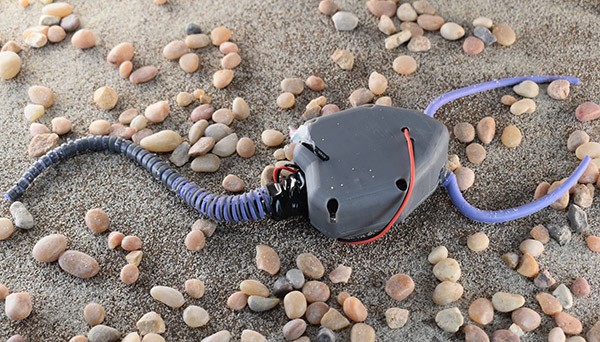[ad_1]
Good day Nature readers, would you prefer to get this Briefing in your inbox free each week? Enroll right here.

Some fashions usually tend to affiliate African American English with unfavorable traits than Commonplace American English.Credit score: Jaap Arriens/NurPhoto through Getty
Some giant language fashions (LLMs), together with those who energy chatbots akin to ChatGPT, usually tend to recommend the loss of life penalty to a fictional defendant presenting a press release written in African American English (AAE) in contrast with one written in Standardized American English. AAE is a dialect spoken by hundreds of thousands of individuals in the USA that’s related to the descendants of enslaved African Individuals. “Despite the fact that human suggestions appears to have the ability to successfully steer the mannequin away from overt stereotypes, the truth that the bottom mannequin was educated on Web information that features extremely racist textual content signifies that fashions will proceed to exhibit such patterns,” says laptop scientist Nikhil Garg.
Nature | 5 min learn
Reference: arXiv preprint (not peer-reviewed)
A drug in opposition to idiopathic pulmonary fibrosis, created from scratch by AI programs, has entered medical trials. Researchers at Insilico Drugs recognized a goal enzyme utilizing an AI system educated on sufferers’ biomolecular information and scientific literature textual content. They then used a unique algorithm to recommend a molecule that will block this enzyme. After some tweaks and laboratory checks, researchers had a drug that appeared to scale back irritation and lung scarring. Medicinal chemist Timothy Cernak says he was initially cautious in regards to the outcomes as a result of there’s quite a lot of hype about AI-powered drug discovery. “I feel Insilico’s been concerned in hyping that, however I feel they constructed one thing actually strong right here.”
Chemical & Engineering Information | 4 min learn
Reference: Nature Biotechnology paper
Researchers constructed a pleurocystitid robotic to analyze how the traditional sea creature moved. Pleurocystitids lived 450 million years in the past and had been in all probability one of many first echinoderms (animals together with starfish and sea urchins) that would transfer from place to position utilizing a muscular ‘tail’. The robotic moved extra successfully on a sandy ‘seabed’ floor when it had an extended tail, which matches fossil proof that pleurocystitids advanced longer tails over time.

The tail of the pleurocystitid duplicate (nicknamed ‘Rhombot’) was constructed out of wires that contract in response to electrical stimulation to simulate the pliability and rigidity of a pure muscular tail.(Carnegie Mellon College – Faculty of Engineering)
Options & opinion
Scientists hope that getting AI programs to comb by means of heaps of uncooked biomolecular information might reveal the reply to one of many greatest organic questions: what does it imply to be alive? AI fashions might, with sufficient information and computing energy, construct mathematical representations of cells that may very well be used to run digital experiments — in addition to map out what mixture of biochemistry is required to maintain life. Researchers might even use it to design completely new cells, that, for instance, can discover a diseased organ and report on its situation. “It’s very ‘Implausible Voyage’-ish,” admits biophysicist Stephen Quake. “However who is aware of what the longer term goes to carry?”
The New York Occasions | 9 min learn
The editors of Nature Critiques Physics and Nature Human Behaviour have teamed as much as discover the professionals and cons of utilizing AI programs akin to ChatGPT in science communication. Aside from making up convincing inaccuracies, write the editors, chatbots have “an apparent, but underappreciated” draw back: they don’t have anything to say. Ask an AI system to jot down an essay or an opinion piece and also you’ll get “clichéd nothingness”.
In Nature Human Behaviour, six specialists talk about how AI programs may help communicators to make jargon comprehensible or translate science into varied languages. On the similar time, AI “threatens to erase numerous interpretations of scientific work” by overrepresenting the views of those that have formed analysis for hundreds of years, write anthropologist Lisa Messeri and psychologist M. J. Crockett.
In Nature Critiques Physics, seven different specialists delve into the important thing position of science communication in constructing belief between scientists and the general public. “Common, long-term dialogical interplay, ideally face-to-face, is among the handiest methods to construct a relationship based mostly on belief,” notes science-communication researcher Kanta Dihal. “This can be a scenario during which technological interventions could do extra hurt than good.”
Nature Critiques Physics editorial | 4 min learn, Nature Human Behaviour function | 10 min learn & Nature Critiques Physics viewpoint | 16 min learn
Expertise journalist James O’Malley used freedom-of-information requests to unveil how one in all London’s Underground stations spent a yr as a testing floor for AI-powered surveillance. Initially, the know-how was meant to scale back the variety of individuals leaping the ticket obstacles, but it surely was additionally used to alert employees if somebody had fallen over or was spending a very long time standing near the platform edge. Making each station ‘sensible’ would undoubtedly make travelling safer and smoother, argues O’Malley. On the similar time, there are regarding prospects for bias and discrimination. “It will be trivial from a software program perspective to coach the cameras to establish, say, Israeli or Palestinian flags — or another image you don’t like.”
Odds and Ends of Historical past weblog | 14 min learn
Picture of the week

Simon R Anuszczyk and John O Dabiri/Bioinspir. Biomim. (CC BY 4.0)
A 3D-printed ‘hat’ permits this cyborg jellyfish to swim nearly 5 occasions sooner than its hat-less counterparts. The prosthesis might additionally home ocean monitoring tools akin to salinity, temperature and oxygen sensors. Scientists use digital implants to regulate the animal’s velocity and finally wish to make it totally steerable, with a view to collect deep ocean information that may in any other case solely be obtained at nice value. “Since [jellyfish] don’t have a mind or the flexibility to sense ache, we’ve been in a position to collaborate with bioethicists to develop this biohybrid robotic software in a method that’s ethically principled,” says engineer and examine co-author John Dabiri. (In style Science | 3 min learn)
Reference: Bioinspiration & Biomimetics paper
Quote of the day
Machine-learning engineer Rick Battle says that chatbots’ finicky and unpredictable efficiency relying on how they’re prompted is sensible when pondering of them as algorithmic fashions quite than anthropomorphized entities. (IEEE Spectrum | 12 min learn)
[ad_2]
Supply hyperlink




